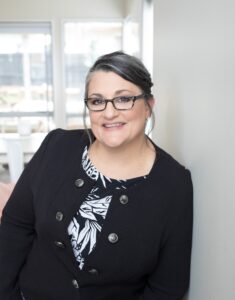Courtesy: Renata Porter
Dysfunction in club leadership seems to be commonplace and while plenty of clubs recognizes the issues, they either choose not to address them or they feel stuck and don’t know what direction to turn. Leaving some feeling like they are on their own with no support.
In my experience with working swim teams, it doesn’t much matter if the club is board run, coach run, for-profit or not-for-profit. There is a gap between the operational team and the coaching team or the dry side and the wet side. That gap ranges from moving in the same direction but at a different pace, to not being on the same path at all.
So how do clubs bridge the gap? It starts with moving past admitting there is a problem and pointing fingers. Having an open conversation where there’s no animosity, just an attempt to put it all out on the table in the hopes of doing what’s right for the membership. You can’t make an effective plan to solve issues or reach any real success until all the nonsense is out in the open. That means a real sit down where both sides discuss where the pain points lie, and both sides listen purposely to what is being said. Some clubs need a mediator, an independent person with no skin in the game to ensure it’s all out on the table and said in a way that it can be heard. This is vital for clubs who are suffering from a lack of trust between leaders.
Out of that conversation you then can create a prioritized list of what needs to be resolved. However, that list is just words on paper if you don’t take the next step and create solid plans on how you will take those issues and turn them into successes.
Here are the three most common issues I come across that clubs must resolve:
- The Board, Volunteers or Operations team do not have the skills and capacity to support the coaching staff and membership in a meaningful way. Notice I didn’t say desire. I think everyone is well meaning, people don’t raise their hands to volunteer because they want to fail. However, it is time that Boards take a hard look at how they recruit for roles. Stop accepting board members who simply raise their hand or who are well liked, instead they should be writing very specific role descriptions. Those role descriptions should include the required skills as well as the amount of time and effort (capacity) are needed to be successful. Skill set and capacity must go hand in hand. It doesn’t do you much good to find an excellent Board President, with successes and credentials that can escalate your club if that person doesn’t have the time to dedicate to doing the work. And just because you have the time, doesn’t mean you should be the one in charge of the finances. Change your mindset to actively recruit for what you need, not what you can get. (By the way, why do your Board members need to come from your membership – other than that’s what your bylaws state?)
- There is a lack of structure across the board. Whether it’s how the coaching staff are structured so all coaches have the right touchpoints and opportunities for growth, to how staff and important volunteers have clear roles and responsibilities and are held accountable to deliver, to the simple things like processes and procedures. It’s time to start treating the club like the business it is and ensuring that both the wet and dry sides are driving initiatives and creating efficiencies.
- The Board or Operations team and the Coaching staff (wet and dry) do not have a shared and agreed-to Vision. One singular vision where everyone understands their role in creating success. There is a big difference between an individual understanding of a vision and a collective understanding of that vision. And to be clear I do mean a vision, not a mission. A mission statement is why your organization exists. A vision statement is where you are going or what you want to achieve in the next few years.
When creating a plan, it’s important to be realistic about what can be achieved in a specific timeline. Often clubs will just pile on to the volunteer base or staff they already have. When doing so, again, it’s important to consider if they have the skillset and the capacity to take on this work. If not, there are two options. If a current person is the right person to deliver on the goal or initiative, work through what can be removed from their workload so this can take priority. The second option is to seek out someone who has the right skill set and capacity. You would be amazed at how many volunteers would come forward if they knew exactly the tasks they were taking on. Go to your membership first with the specifics, then go outside of your membership if you need to. If this goal or initiative is important enough to resolve issues, then it’s important enough to find the right person to lead the way.
It’s not lost on me that the issues I’ve presented have been over-simplified. My point is only to call out that you are not alone if your club is having leadership issues. Kick-off the new year with having that initial conversation, where everyone arrives with the mindset of serving the membership to the fullest. Share the pain points, be honest, listen to all points of view and start to devise a list of what needs to be actioned. Ultimately, until both the wet and dry sides can come together to build (or rebuild) the bonds of trust, you will just continue with the status quo. You owe your membership more than that.
 ABOUT RENATA PORTER
ABOUT RENATA PORTER
Renata Porter is a business consultant who has shifted her focus to helping youth sports clubs have positive outcomes by being an end-to-end partner providing actionable guidance and support. Her company’s aim is for sports clubs to shift from old mindsets and sameness, to running the club as the business it is, pulling themselves out of surviving to thriving with options. With over 30 years of experience in Leadership, her practical no-fluff approach enables clubs to see immediate results. You can find more information at www.yoursportsresource.com and www.renataporter.com.


Here for the comments. Undoubtedly, will be awesome.
Austin Swim Club?
Good article. Many of the issues stem from the effectiveness of the board itself. Board composition is key to the effectiveness. Too many instances where specific competencies are not actively sought out for open board positions instead it’s volunteers with in some cases little to no swim sport experience or board experience. It would help greatly if the parent base at clubs was more engaged in the board selection process. Where membership voting is involved the number of votes per applicant is generally woeful. Not only should the general membership participate more beyond the “swimmers” wet side world but they should be paying attention to how the board itself is operating and the financial position of the club. Granted not… Read more »
I agree that the parent base at clubs should be more engaged. I haven’t seen a lot of transparency in terms of goals, visions, by-laws, minutes. It’s hard enough to even get a practice schedule. The only parent board members I’ve seen have been ones hand-picked by the coach that will agree with everything the coach wants. Anyone with an opinion or swim knowledge is pushed out. There needs to be open and healthy communication and discussion.
While it’s important that youth sports organizations aspire to operate in a business framework it’s equally important to not lose sight of the most critical purpose they serve. It starts and ends with the coaches and swimmers. It’s about swimmers enjoying the sport and growing as individuals. It’s about the critical role that coaches serve as an integral part of the village that is responsible for our kids development. Outside consultants and board members who tend to have business centric backgrounds often lose sight of that in their unwavering drive to create the model sports club. Many parents who volunteer for board positions tend to have a business centric skill set that fails to recognize that the secret sauce of… Read more »
Solid article.
Solid article.
I love the question “why do board members need to come from your membership….” That’s a real good point. We’ve pulled outside help from other organizations and leaders and it has helped us tremendously. They don’t have to be Board members, but can help by serving in an advisory counsel. This works best when the board members know their roles or at least are trying to understand their roles.
USA swimming has the CLBS management courses that help as well. Although both (101 and 201) only graze the surface of what a non-profit is and how it operates.
https://professionaled.utexas.edu/nonprofit-management-certificate-program Took this program. Lots of great sources and info for coaches like where and how to apply for grants, budget writing, and other things.
Protect your neck.
I 100% agree with you on your first paragraph. This is not done enough, only egos (Coach or BOD) get in the way of this being a common practice.
Have to disagree with your second statement, if only on a matter of execution. This is implemented poorly at best and I found sitting through 201 to be a spectacular waste of time. I would much rather see USA Swimming out-source this with some of our registration money to professionals (like the author) or professional entities where this is their sole focus. USA Swimming does not have enough staff, the right staff to truly help their struggling clubs.
I like 201 because of the sources. The content was ok, but when you research the sources that are being cited, you can learn a lot. Boardsource is a contributor and we receive a lot of great stuff from them on a weekly basis.
Your last statement, yeah, 100% agree. How many non-profit teams are out there? Who have we hired with actual experience in dealing and working with non-profits? USA swimming is a non-profit organization itself. Why didn’t they search for someone with an extensive non-profit background? Still scratching my that one.
That’s why coaches got to go help themselves. Stop asking for help and go be the leader.
Protect your neck.
Maybe you mean stop waiting for help.. ; )
Wu-tang!
Dysfunction in word spelling
Comment of the year
is swimswam advertising for a proof reader position?
Disfunction is a more recently acceptable spelling of the word dysfunction.
https://www.merriam-webster.com/dictionary/disfunction
From https://books.google.com/ngrams/graph?content=disfunction%2Cdysfunction&year_start=1800&year_end=2019&corpus=26&smoothing=3
then why did you change the spelling of the word?
So I could stop having this tedious conversation.
According to Merriam Webster in the link you provided, disfunction is a “less common spelling of dysfunction.”